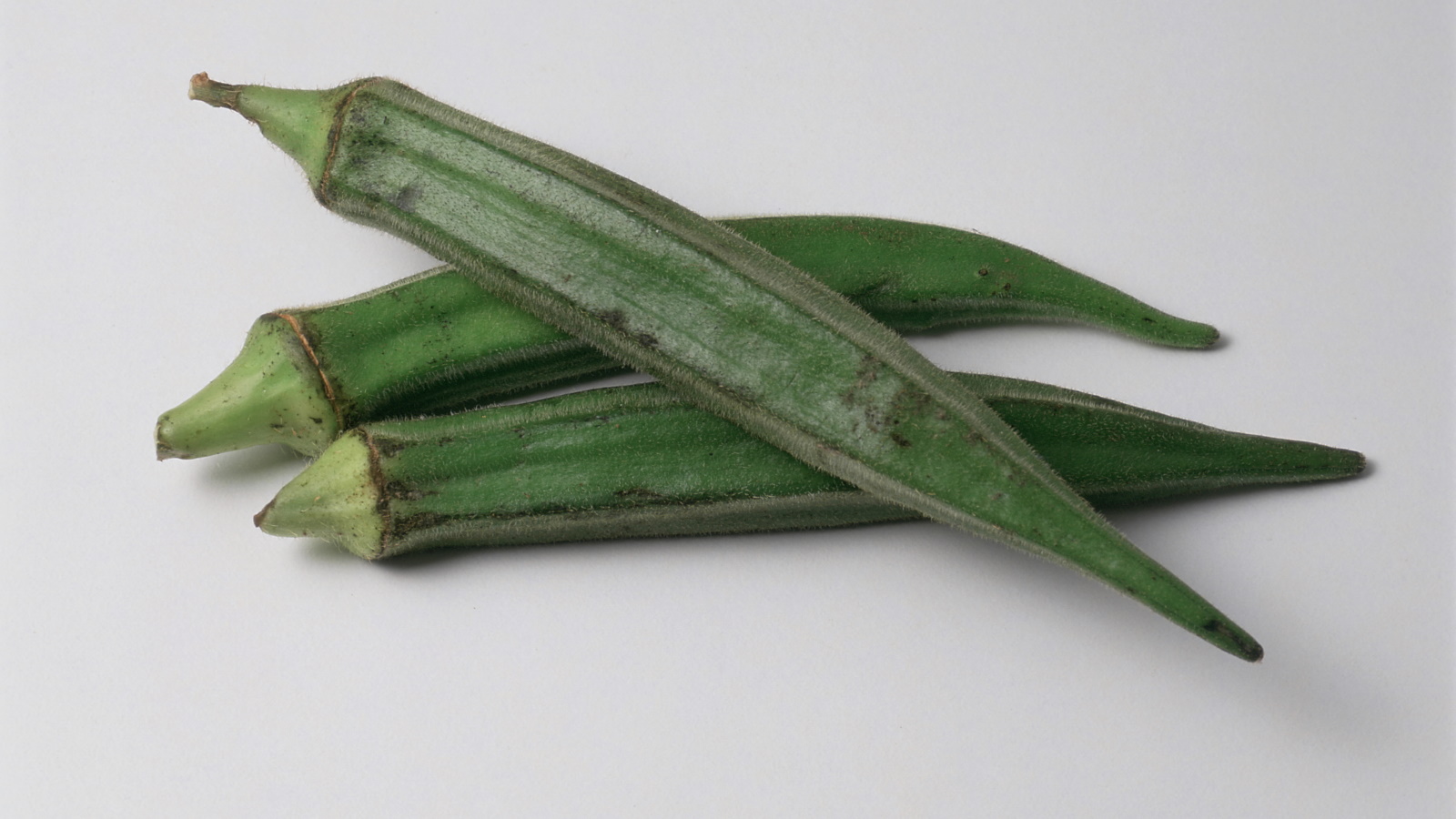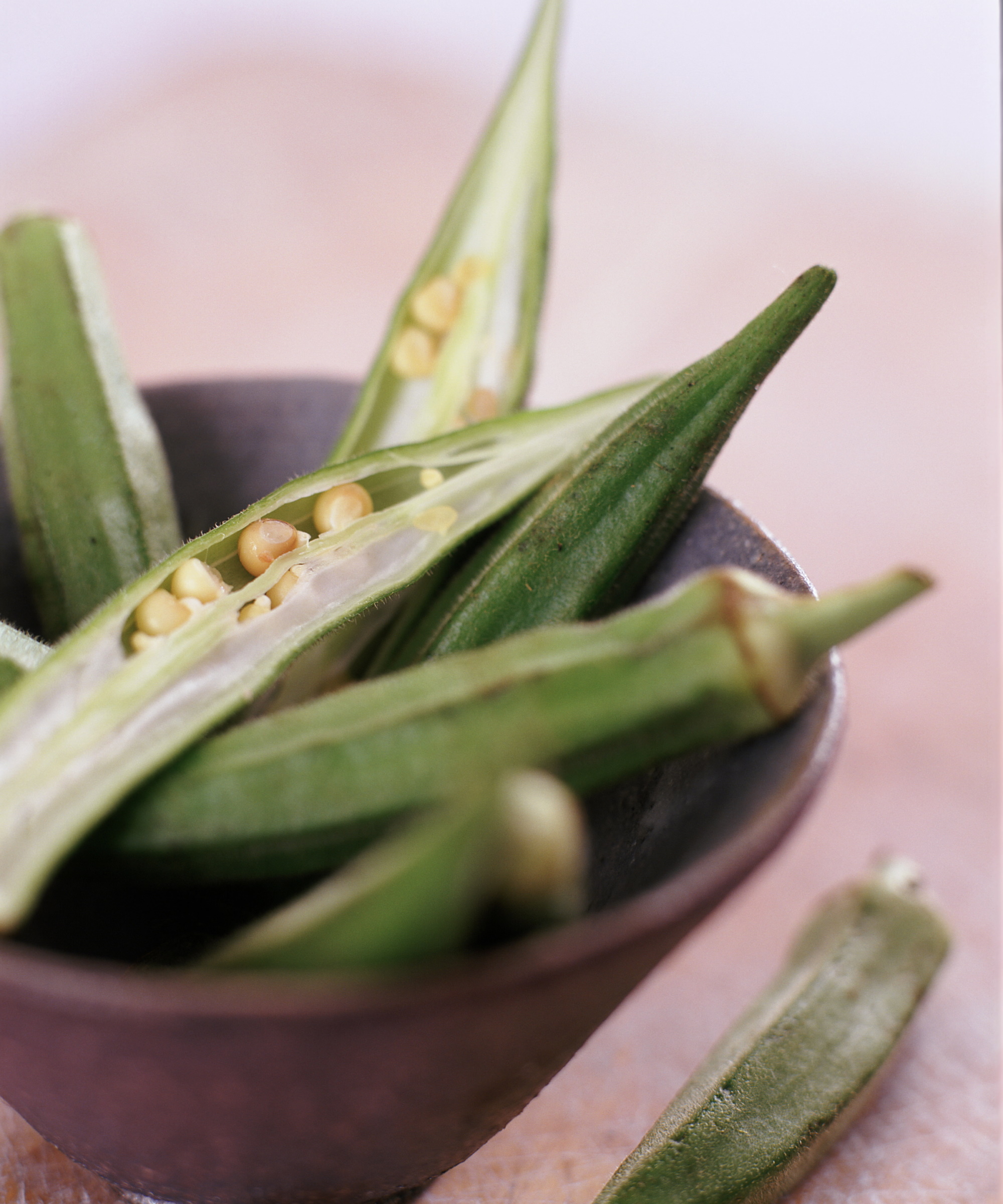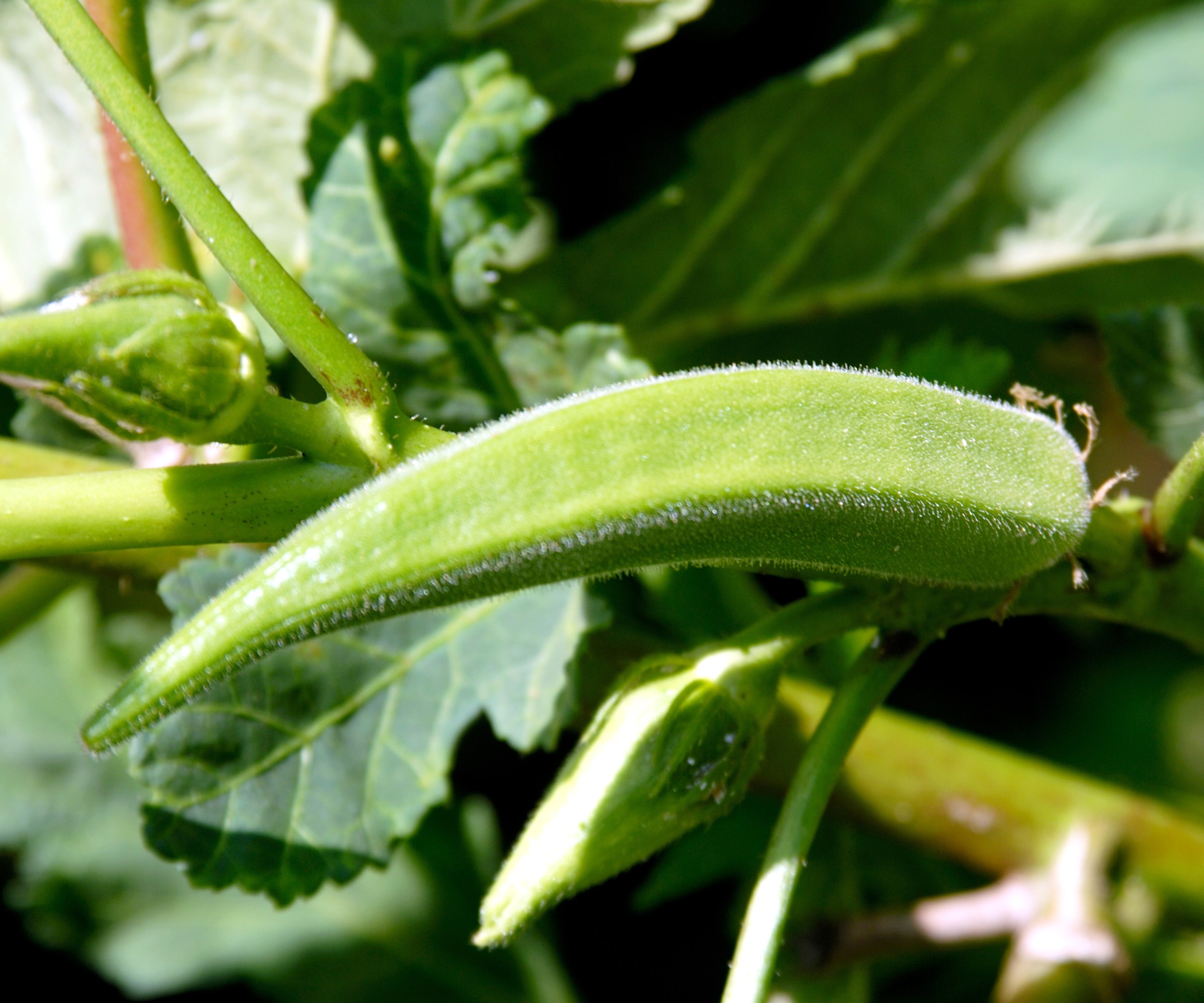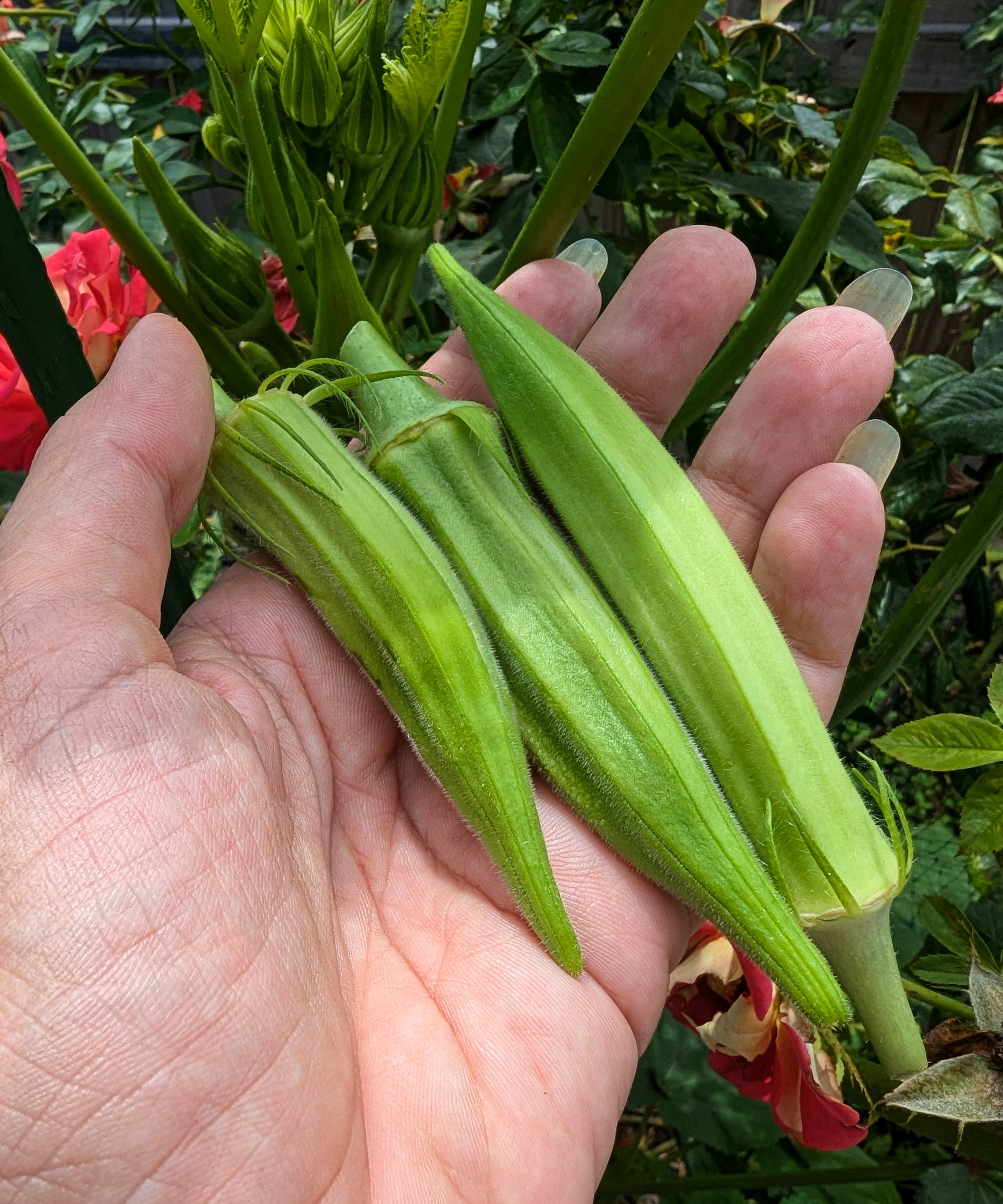
Okra is a fast-growing crop that can provide a bounty of pods throughout the summer and fall to fulfil your culinary desires. Young and tender okra pods are a delicacy, though okra must be harvested at the right time as older ones are woody and tough.
If you are new to growing okra, knowing the ideal time to harvest can be tricky. Picking okra is a task that needs to be done diligently and regularly to ensure the longest crop of tender pods throughout the season.
Knowing when to harvest okra is an essential part of growing the crop. Factors such as the signs to look for, the ideal size of the pods, and how to harvest successfully all play a key role in helping you get a bumper yield of highly nutritious and delicious okra.

Tips to boost a yield come okra harvest time
Okra thrives in a hot and sunny climate. For a good harvest, growers in cooler climates can grow okra in a greenhouse, while in warmer US hardiness zones you will get a top crop outdoors in hot summers. To help guarantee a strong yield, on top of lots of heat okra needs regular watering, so the soil is consistently moist, and fertilizing through the summer.
When to harvest okra - these are the signs it is ready

Timing is important when harvesting okra, it is best to pick pods when they are small and tender. Veronica Sparks, the owner and operator of Homesteading Suburbia, claims: ‘Grabbing mature okra when it's ready to harvest can be a bit tricky. If you harvest too late, the pods can get tough and woody and they won't taste as good.’
The timing for harvesting okra starts around two months after planting the vegetable in your kitchen garden. It often takes 60-70 days from sowing the vegetable seeds, or around 40-50 days from transplanting the seedlings into the vegetable garden - the exact time will depend on the variety and weather conditions and any seed packet should give an estimate of the days to maturity.
Mature okra plants start to flower, that is the sign that okra harvest time will be just around the corner. ‘Once flowers appear on your okra plant, be on the lookout for pods,' says Veronica Sparks. ‘The flowers will die and, after a few days, you'll see the pods form.’
The pods want to be picked when they are 2-3 inches in length and have a vibrant color - this will most often be green, but you can get varieties of okra that are purple or deep red. Make sure to pick pods when they are this size as letting them get much larger will mean woodier okra. Any pods that are the right size but pale in color should be discarded, as they are also likely to be woody.
‘The more okra pods you pick, the more the plant produces,’ says Diane Kuthy, creator of How to Grow Everything. ‘For this reason, you should consistently harvest okra pods throughout the growing season.
'Sometimes, this means that you are picking just a handful of pods each day, but it is important to pick pods whenever they are ready. Don't wait for a single day to do a big okra harvest or you'll be disappointed with your yields.’
How to harvest okra - quick tips for safe picking

Okra is not a tricky crop to harvest, however, it is always recommended to wear gloves and long sleeves when picking. This is because the plant has lots of fine hairs on the stems, leaves, and pods that can irritate the skin. Advancements in breeding mean you can get spineless varieties of okra to help make harvesting easier, however, wearing gloves remains preferable even when picking these types.
Harvesting of okra pods is best done with a sharp harvesting knife - such as this foldable harvesting knife available at Walmart - or a pair of sharp and clean pruning shears. Using tools to harvest mitigates the risks from the hairs on pods and also eliminates the risk of making the harvesting mistake of damaging the plant by pulling pods too hard - which will massively impact the yield if you snap the main stem or uproot the plant.
Using your knife or shears, snip right below where the pod attaches to the stem. If the stems are tough to cut, it is a sign that the pod itself will be woody - so it is best to discard the pod and let the plant put energy into producing new ones. Place the harvested okra carefully into a container as you go to avoid damaging the delicate pods.
Leaving pods on the plant and letting them develop can be a way to collect seeds to sow next year. However, keeping older pods on the plant to get free seeds will slow down the production of new tender okra to harvest.
A variety of okra that grows vigorous 4' plants and produces an abounding harvest of spineless dark-green, grooved pods.
Safeguard your arms during gardening and stay protected from cuts and scratches. A one-size-fits-all design with thumb holes and adjustable hook and loop closure.
Gloves with a lightweight and breathable knitted base to give a comfortable fit and a flexible rubber coating that comes in mint green and bright red.
Storing okra after harvest
After harvesting okra, refrain from washing the pods until you are going to eat them otherwise it can make them susceptible to mold or going slimy.
Veronica Sparks recommends: ‘You can store fresh pods in the refrigerator for a couple of days, but they go bad quickly, and you'll notice spoiled okra gets soft and slimy.’ Fresh okra pods can last 5-7 days in a refrigerator crisper drawer. ‘For longer storage, blanche and freeze your okra pods,’ adds Veronica.
FAQs
Can you eat raw okra?
Okra is safe to eat raw, though it has a sticky texture which may not appeal to some people. It contains lots of beneficial vitamins and minerals and can be eaten whole, sliced, or blended in juices or smoothies.
What can you do with old okra that is too big?
Okra that has grown larger than four inches in length is likely to be tough, woody, and bitter. Such pods are best removed from the plant to encourage new growth and more okra to develop. The large okra pods can either be discarded or cut into pieces to be added to stews - in which they can be slowly cooked to soften the texture.
Okra can be sown twice a year for the longest cropping season. As well as being sown in spring, this fast-growing vegetable can also be planted in June. An early summer sowing can start being harvested from late summer onwards to give you flavorful okra pods well into fall.







